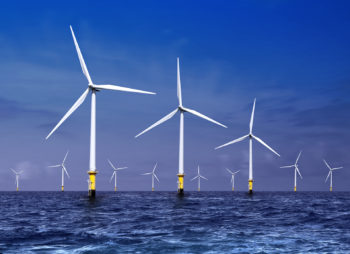
A consortium planning to build Britain’s Triton Knoll offshore wind park will buy 90 giant turbines from MHI Vestas, it said on Monday, in what the maker said was the first announced deal for its record 9.5 megawatt (MW) capacity product.
A final investment decision for the wind park, in Britain’s North Sea, is likely in 2018 with full onshore construction starting shortly after, and offshore construction starting in 2020, it added.
The 9.5 MW turbine, made by a joint venture between Japan’s Mitsubishi Heavy Industries and Denmark’s Vestas , has the world’s largest capacity, designed to challenge an 8.0 megawatt turbine by Siemens Gamesa, the market leader in the growing offshore market.
“This is the first announced project,” for MHI Vestas’ new turbine, a company spokesman told Reuters.
He couldn’t confirm if Triton Knoll will be the first wind farm to actually use the product though. Asked if there are more deals under negotiation, he declined further comment.
MHI Vestas is targeting Britain and continental Europe to sell its 9.5 MW megaturbine, for projects “particularly in the North Sea,” added the spokesman.
A skyscraper turbine of this size, towering at just below 200 metres in total, can deliver power to about 8,300 British homes, MHI Vestas data show.
Both MHI Vestas and Triton Knoll refused to disclose the value of the contract.
The world’s three leading offshore wind operators – DONG Energy, EnBW and Vattenfall – all told Reuters they were eyeing megaturbines to adapt to dwindling government handouts.
Germany’s Innogy and Norway’s Statkraft won a public tender for the 860 megawatt Triton Knoll offshore wind project earlier this month, with a 50-50 joint venture.
Norway’s Statkraft is going to divest its shareholding in the project before an investment decision is made, a company spokesman told Reuters.
Statkraft has repeatedly said it would divest its stakes in offshore British wind.
Source: Reuters.
